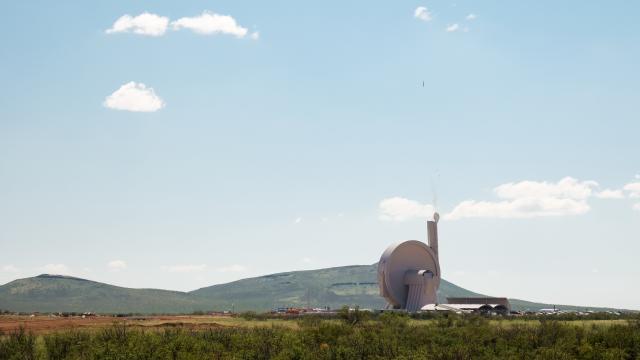A recent demonstration by alternative launch provider SpinLaunch suggests payloads containing sensitive equipment can endure the tremendous G-forces generated by the company’s suborbital accelerator.
More than 150 partners, government officials, and industry enthusiasts gathered at Spaceport America in the Jornada del Muerto desert of New Mexico to watch the latest test of SpinLaunch’s A-33 Suborbital Accelerator on September 27. The company has now performed 10 tests of its mass accelerator in less than a year.
A rapidly rotating arm inside the 32.92 m-wide facility hurled a projectile, or Test Launch Vehicle, to heights reaching 7,600 metres, in a demonstration consistent with the company’s previous tests. For reference, passenger aeroplanes cruise at around 11,000 metres, and SpinLaunch eventually hopes to send payloads as high as 60,000 metres.
This time, the projectile carried demonstration payloads for NASA, Airbus, Cornell University, and satellite manufacturer Outpost Space. As SpinLaunch said in a press release, the demonstration payloads, all of which survived and were recovered, are “inherently compatible” with the company’s launch system. Indeed, the test marked an important milestone for the company, as it was able to show that partner payloads containing sensitive instrumentation can withstand the demands of a kinetic launch.
The A-33 facility is one-third the size of the version the company is hoping to build. Founded by Jonathan Yaney in 2014, the California startup’s ultimate goal is to deliver small payloads to low Earth orbit. SpinLaunch raised $US71 ($99) million during a recent Series B funding round, raising its total funding to $US150 ($208) million. It’s an attractive idea, as this unique mode of satellite delivery could result in a dramatic reduction in the overall cost to launch and a significant reduction in the use of fuel compared to conventional rockets.
“The data and insights collected from flight tests will be invaluable for both SpinLaunch, as we further the development of the Orbital Launch system, and for our customers who are looking to us to provide them with low-cost, high-cadence, sustainable access to space,” Yaney said in the company’s press release.
Once built, the full-scale version, with its arm spinning at 8,047 km per hour, will hurl objects to high altitudes. Shot up into the stratosphere, a propulsion stage will kick in to finish the projectile’s trek to low Earth orbit. SpinLaunch is hoping to launch satellites weighing 200 kilograms, among many other possible payloads, by 2026.
In an exciting development for the company, SpinLaunch signed a Space Act Agreement with NASA earlier this year. The space agency participated in the 10th test to “better understand SpinLaunch’s payload integration and testing procedures” and to “gain insight into the mass accelerator launch environment,” according to the press release. To that end, NASA provided the company with a payload for monitoring the launch experience. This payload, known as the Data Acquisition Unit (DAQ), contained two accelerometers, a gyroscope, and a magnetometer, along with sensors to track pressure, temperature, and humidity.
Both NASA and SpinLaunch performed pre-flight qualification tests to make sure the DAQ wouldn’t get damaged inside the centrifuge. This included exposure to 10,000 Gs inside the company’s A12 Lab Accelerator, located at SpinLaunch’s Long Beach headquarters. At the conclusion of Flight Test 10, the Test Launch Vehicle was recovered and its contents extracted, allowing the SpinLaunch and NASA engineers to access the important launch data recorded by the DAQ.
The payloads provided by Airbus, Cornell, and Outpost Space also survived both the pre-flight qualification tests and the flight itself. The Airbus payload consisted of a satellite Sun sensor that’s used for orienting satellites in orbit, while Outpost provided an onboard flight computer.
The payload provided by Cornell’s Space Systems Design Studio, a batch of tiny, inexpensive ChipSats, demonstrated the wide range of possible applications afforded by the kinetic launch system, as Hunter Adams, an engineering lecturer at Cornell, explained in the press release:
Centimeter-scale spacecraft will be a critical tool in future planetary science missions. Deployed en masse from orbit, ChipSats will descend through the atmosphere and down to the surface of this planet and others, gathering spatially distributed datasets as they fall. To plan these missions, we must understand the chaotic trajectories that low-mass and high-surface area objects take from the top of the atmosphere to the surface of the planet. By conducting experiments with SpinLaunch’s Suborbital Accelerator, we can gather critical information for planning future planetary science missions involving ChipSats. It is absolutely a game-changer for centimeter-scale spacecraft research.
Plenty of work remains to be done as SpinLaunch trucks ahead with its fascinating project. The company is hoping to fling objects to space in just four years — not much time — but that recent influx of cash means this deadline might be attainable. And it certainly doesn’t hurt to have NASA as a partner. The A-33 Suborbital Accelerator is off to a good start, but the true test will come once the full-scale version is finally built.
Prepping the accelerator
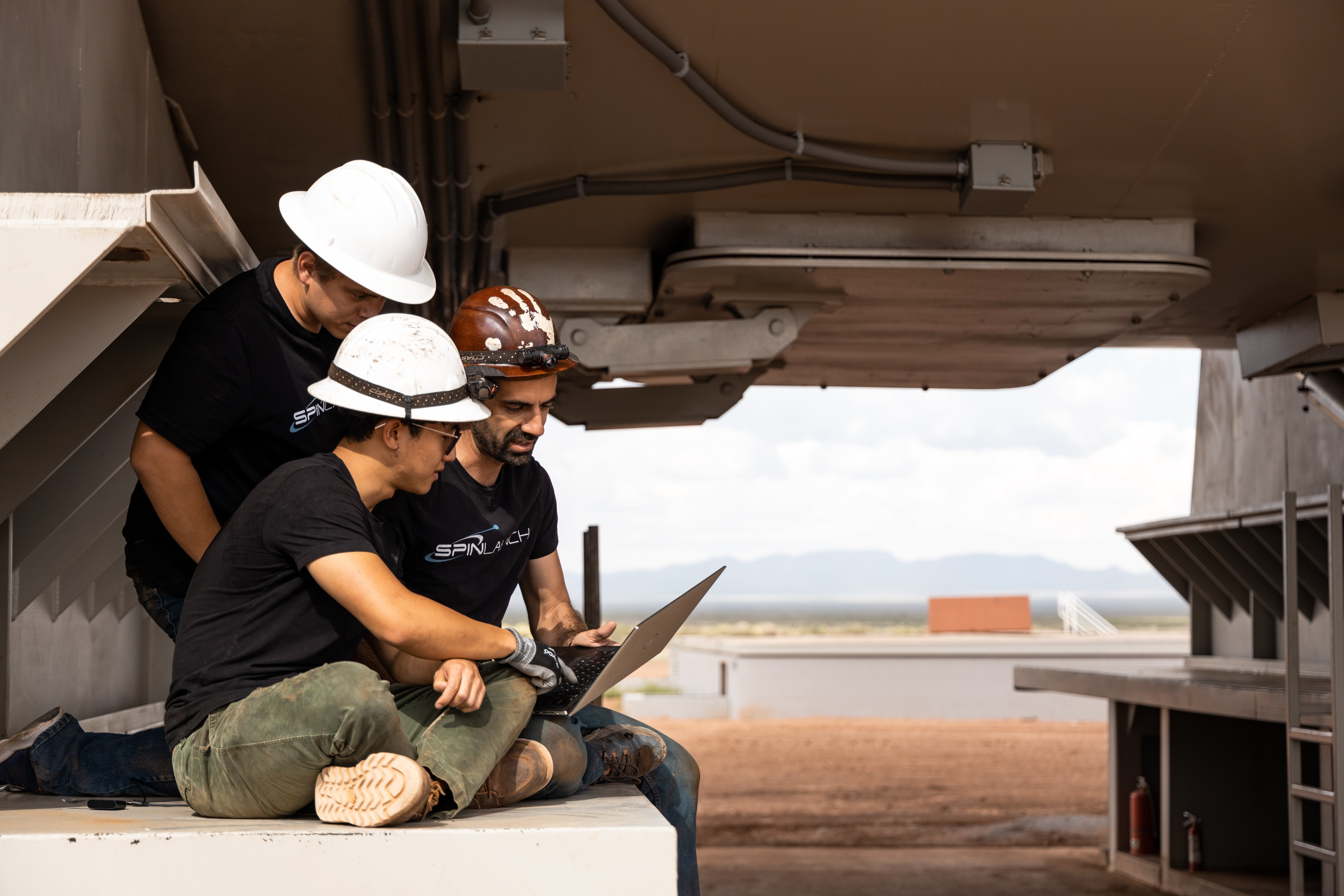
Touring the facilities
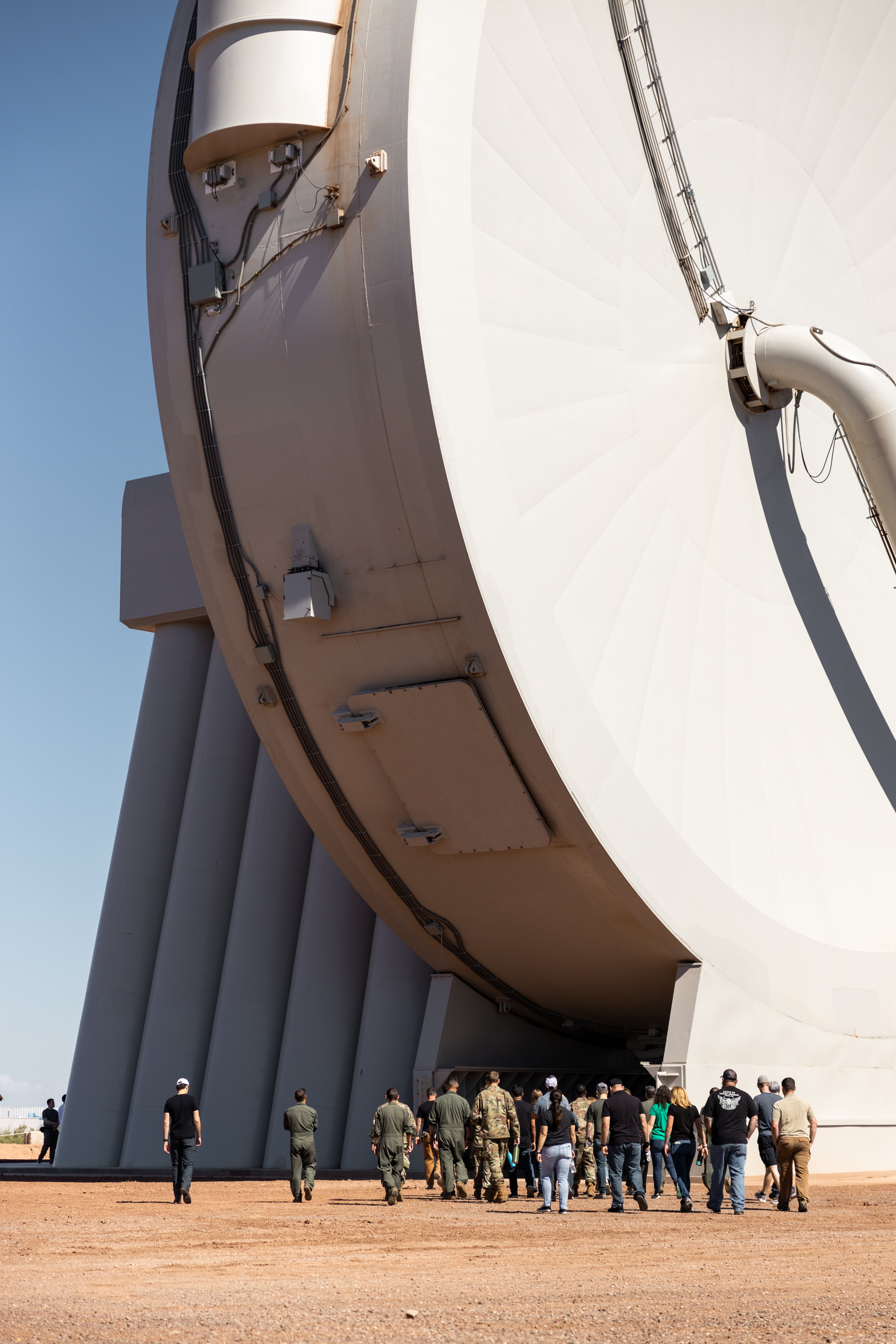
Vehicle integration
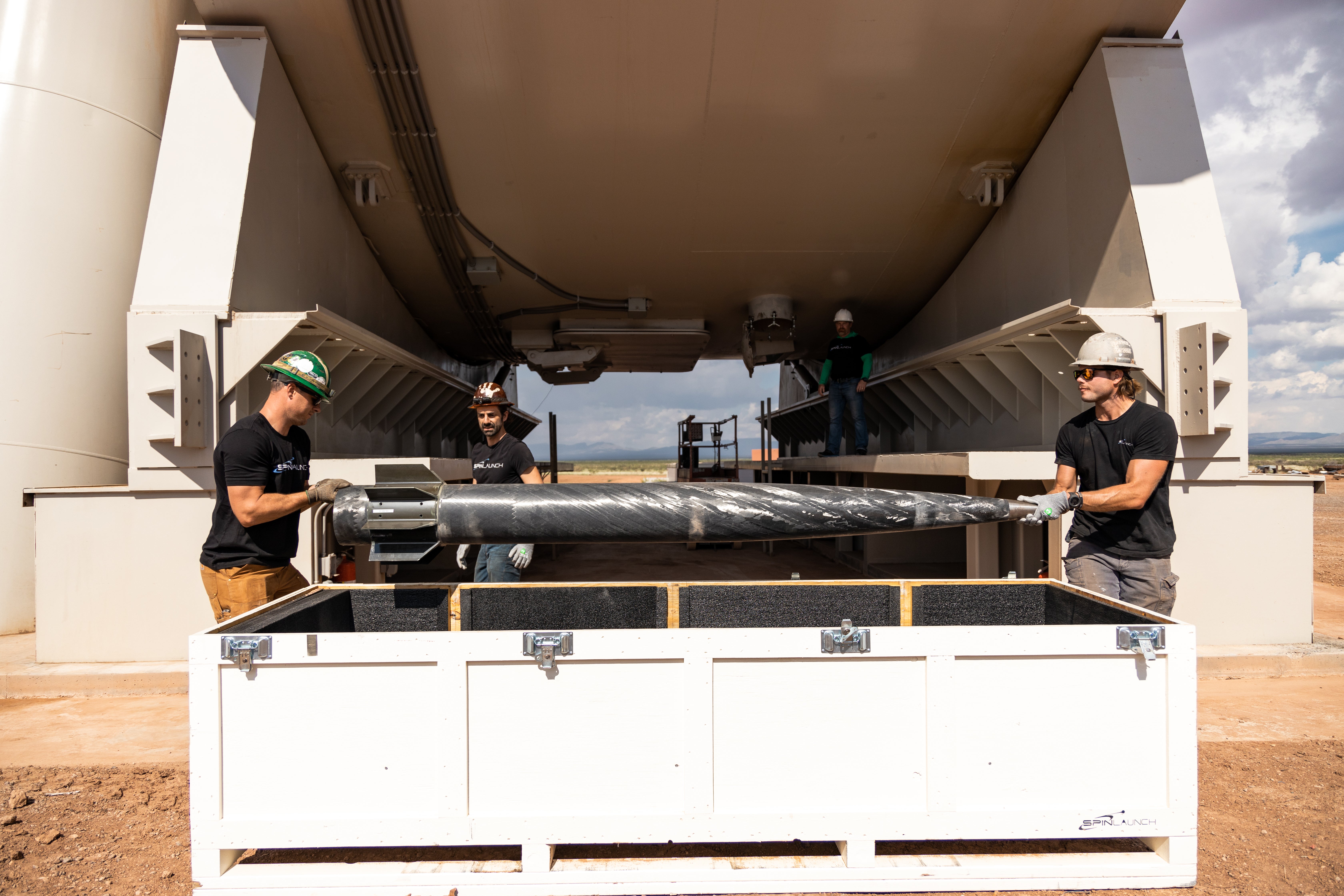
Payloads
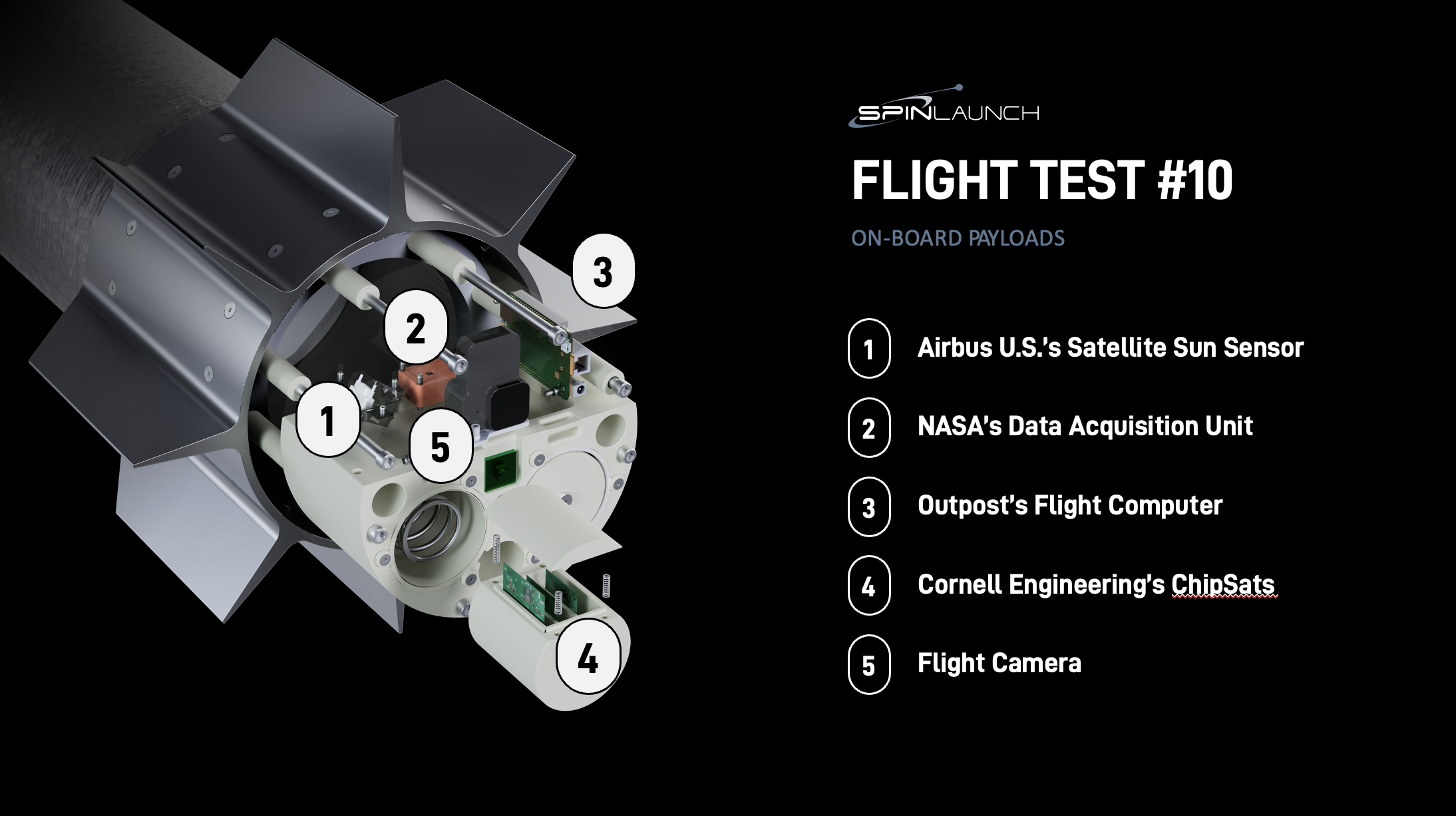
Checking out DAQ
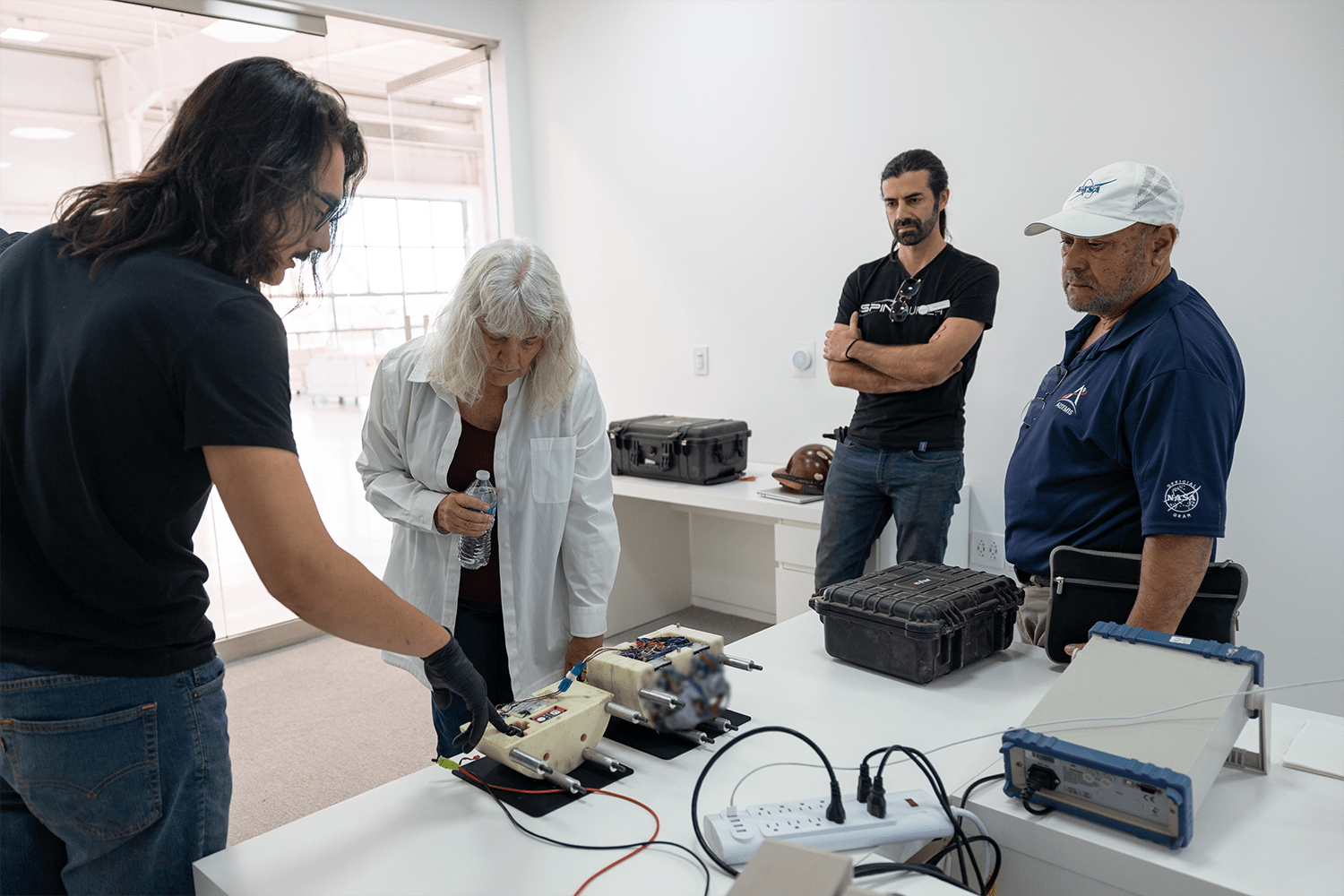
Up and away
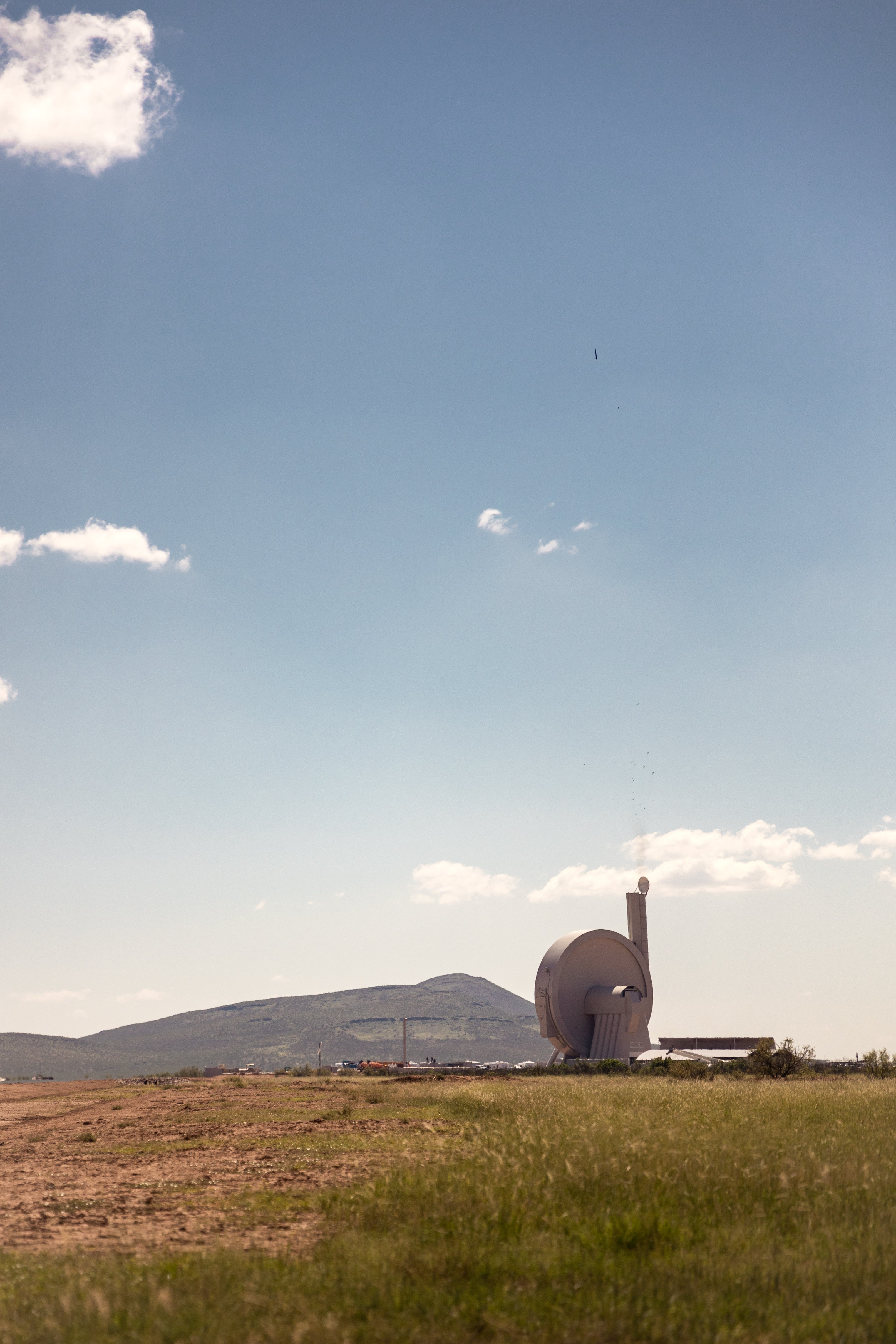
Lab accelerator

The ultimate goal

